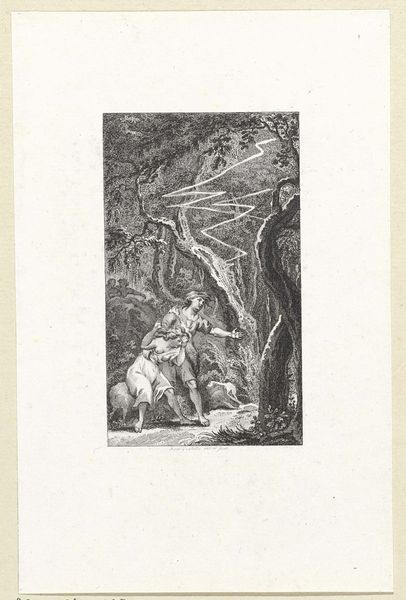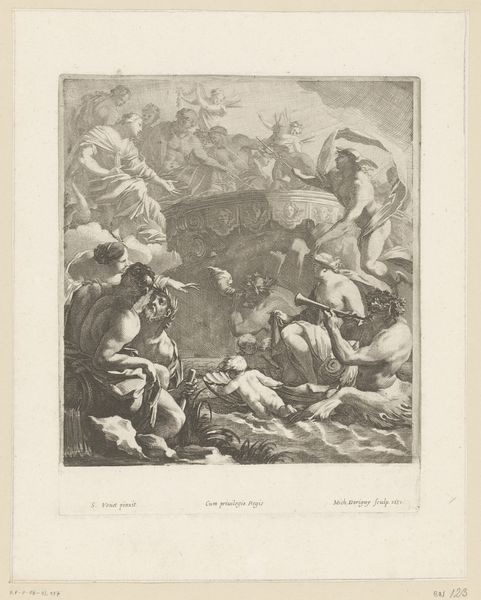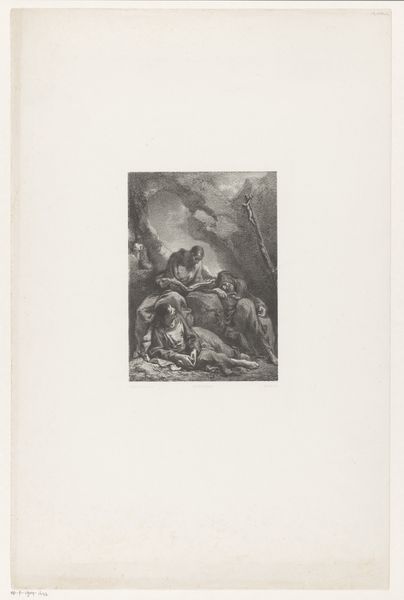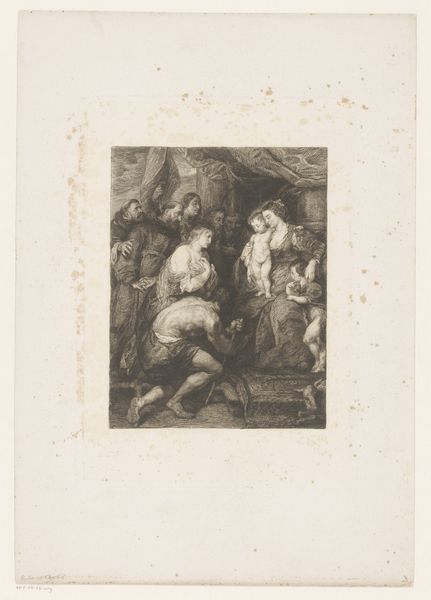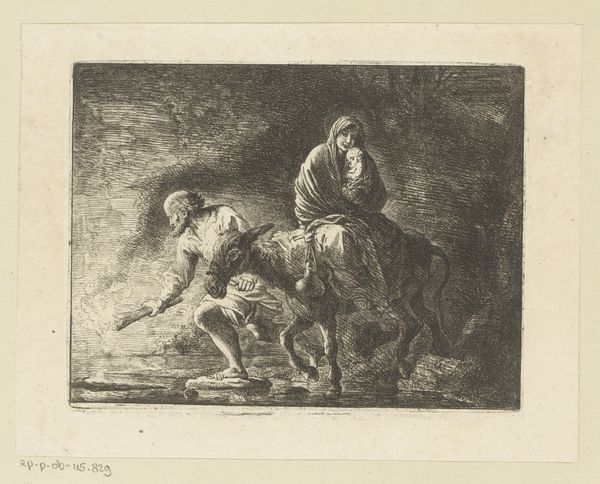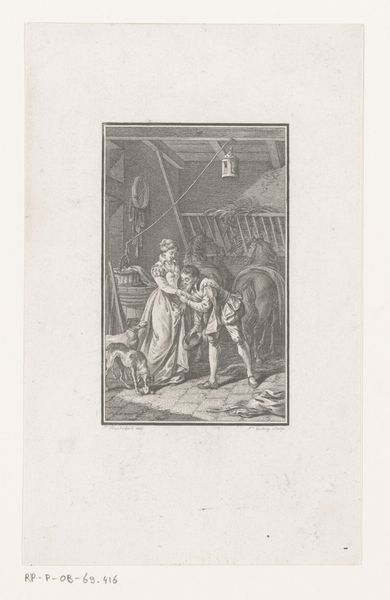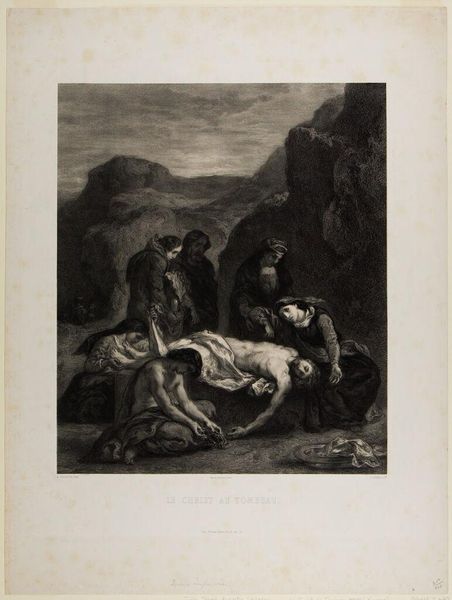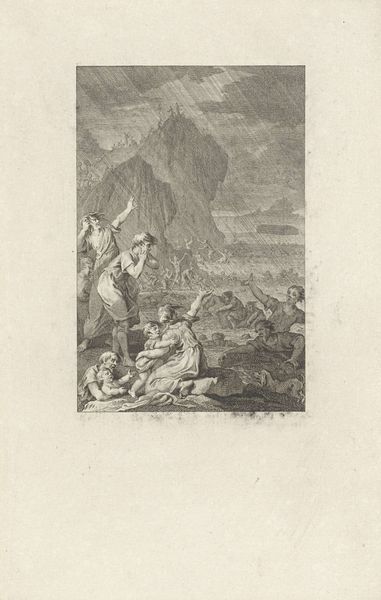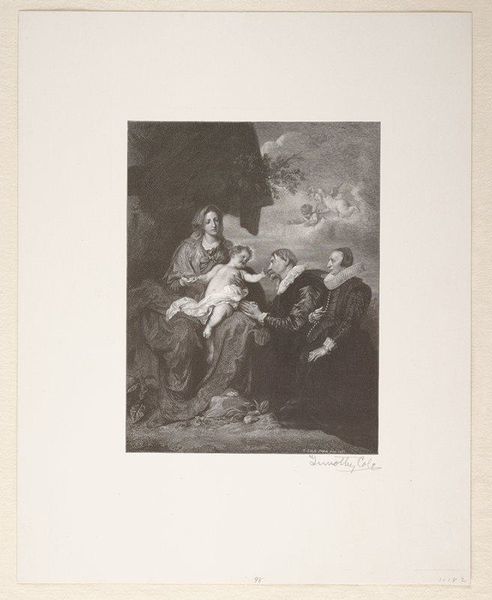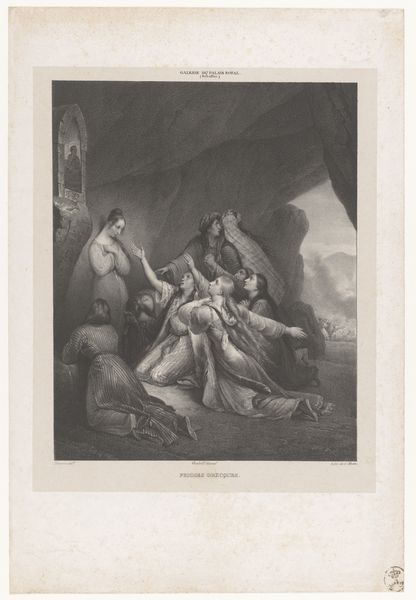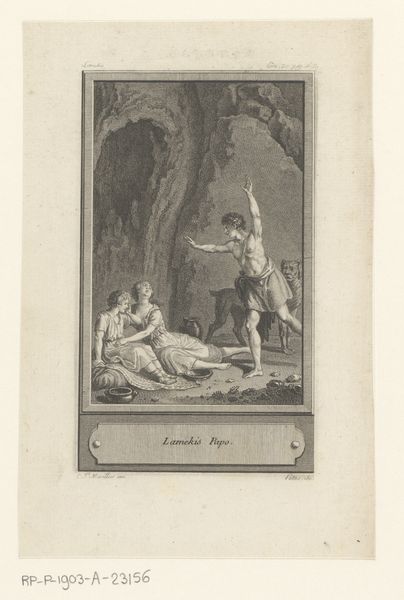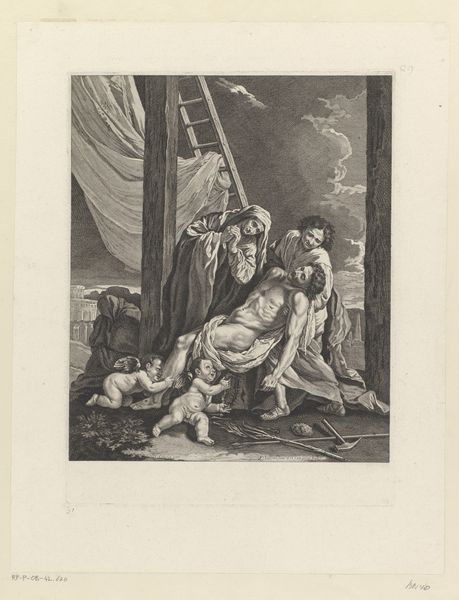
print, engraving
#
medieval
# print
#
old engraving style
#
figuration
#
history-painting
#
engraving
#
monochrome
Dimensions: height 280 mm, width 207 mm
Copyright: Rijks Museum: Open Domain
Curator: This is Léopold Flameng’s “Graflegging van Christus,” or “Entombment of Christ.” It was created sometime between 1841 and 1910. What do you make of it? Editor: Immediately, I feel a profound sense of sorrow and resignation. The stark monochrome palette enhances the gravity, creating a somber, almost suffocating atmosphere. It's a classic scene of mourning. Curator: The visual weight certainly rests in the foreground with the figures surrounding Christ's body. There's a beautiful symbolic clustering there. The layering suggests unity in grief, but also, each face shows unique elements of loss. I find myself considering the figures' traditional clothing and its cultural weight, perhaps an indication of the setting and values imparted upon these subjects? Editor: Absolutely, and situating this image within its own historical moment of production, we see its connection to centuries of similar depictions of grief and the impact of Christ. Given the tumultuous sociopolitical climate of the 19th century, what do you think this representation of Christ's entombment offered viewers at the time? Was it a commentary on power structures, resistance, or something else entirely? Curator: That’s a good question. It would certainly serve as a familiar reference point, drawing upon established religious symbolism and shared cultural narratives. Note, for example, the subtle halo effect around Christ. Even without overt color, Flameng manages to evoke divinity through strategic light and shadow, creating almost an ethereal presence. I wonder what the artistic choices are telegraphing about how one approaches iconography, loss, the end of innocence, the dawn of experience… Editor: The monochrome really emphasizes the timeless aspect, allowing us to connect with the pain across different eras. Yet it is interesting that it still alludes to an old engraving style and technique even as it perhaps invites a reconsideration of those values. This work, while depicting a scene of religious mourning, becomes a meditation on death, power, and the echoes of history within the frame. Thanks for those points! Curator: And thank you! It makes one think more broadly about continuities of grief over time.
Comments
No comments
Be the first to comment and join the conversation on the ultimate creative platform.
